
Does Gut Control What You Eat?
Picture this: you’re driving home after a long day, and suddenly, you crave ice cream from your favorite shop. You might think, “One treat will be okay,” but have you ever wondered how much your gut controls what you eat? It’s not just your brain that influences cravings—your gut plays a significant role.
Inside us, billions of tiny creatures make up our gut microbiome. These microbes don’t just help with digestion; they also influence how your gut controls your food and cravings. A study at the University of Pittsburgh found that mice with different gut bacteria had unique diet preferences, further proving that your gut controls what you eat.
So, the next time you crave fries or chocolate, remember that your gut controls what you eat, not just your brain. The gut-brain connection shapes our food choices more than we realize.
Key Takeaways
- The gut microbiome consists of trillions of microbes that affect our digestive health and behavior, influencing how our gut controls what we eat.
- Microbes in the gut communicate with the brain, impacting cravings and mental health and reinforcing the idea that the gut controls what you eat.
- Studies show that changes in gut bacteria can alter food cravings, suggesting that the gut controls what you eat and plays a significant role in eating habits.
- A balanced gut microbiome supports health, while dysbiosis can lead to heart disease and diabetes. This highlights how the gut controls what you eat.
How the Gut Controls What You Eat and Shapes Dietary Choices
The gut microbiome functions like a bustling city of microbes, each playing a crucial role in your health. Beyond aiding digestion, these microbes significantly influence how your gut controls your food. They produce neurotransmitters, hormones, and other compounds that send signals to the brain, affecting your cravings, appetite, and mood.
For example, certain microbes produce serotonin and dopamine, which are linked to feelings of satisfaction and reward. You may crave sweets or fats to restore balance when these levels shift. This shows that the gut processes food and drives your desire for it. Additionally, different bacterial strains thrive on specific nutrients, meaning the foods you eat can nourish or starve these microbes, impacting your long-term dietary habits.
How the Gut Controls What You Eat Through the Gut-Brain Axis
The gut-brain axis encapsulates this intricate relationship between the gut and brain. This direct communication pathway illustrates how the gut influences dietary choices through a complex system of nerves, hormones, and immune signals.
The gut-brain axis relies on these components to transmit information, allowing the gut and brain to affect each other’s functions. For instance, the vagus nerve, which links the gut to the brain, plays a critical role by sending signals about hunger, fullness, and cravings.
Additionally, hormones such as ghrelin and leptin, which the gut regulates, directly influence appetite. Ghrelin, known as the “hunger hormone,” signals the brain when it’s time to eat, while leptin, which induces feelings of fullness, tells the brain to stop eating. Thus, the gut uses hormonal signals to manage appetite and food intake.
Moreover, the immune system also plays a significant role. Inflammation in the gut can impact brain function and mood, subsequently affecting eating habits. Disruptions in gut health, such as dysbiosis (an imbalance in gut bacteria), can lead to unhealthy cravings and altered food choices, further highlighting the strong connection between your gut and brain.
Ultimately, this network of nerves, hormones, and immune signals reveals how the gut-brain axis controls your cravings and overall health. By maintaining a healthy gut microbiome, you can enhance this communication, leading to better food choices and improved well-being.
The ENS: The Second Brain That Controls What You Eat
| Microbial Influence | Impact |
|---|---|
| Production of Neurotransmitters | Regulation of mood and appetite |
| Interaction with Brain Structures | Influences learning and memory |
| Alteration of Food Preferences | Shaped by specific bacterial strains |
| Production of Metabolites | Modifies gene expression in brain cells |
Signaling Pathways from Gut Bacteria to the Brain
Our gut and brain are intricately connected through a sophisticated communication network, primarily orchestrated by the tiny life forms in our gut. Among these, Enterococcus faecalis plays a pivotal role in mediating this connection. These microbes transform our food into biochemical signals that travel through our body, impacting our cravings, mood, and overall feelings. This dynamic interplay underscores how the gut’s microbial community influences not only digestion but also our emotional and psychological well-being.
Fundamental Mechanisms in How the Gut Controls What You Eat Through Brain
| Data Points | Details |
|---|---|
| Enteric Nervous System | It contains over 500 million neurons, making it the most complex neural network outside the brain. |
| Vagus Nerve | It is the primary link between the enteric nervous system and the brain. |
| Neurotransmitter Production | Gut microbes produce or assist in producing chemical neurotransmitters. |
| Functional Bowel Disorders and Mental Health | Significant overlap exists between functional gastrointestinal disorders and mental health disorders like anxiety. |
| IBS and Anxiety | A higher-than-normal percentage of IBS sufferers develop depression and anxiety. |
| Probiotic Research | Researchers are exploring probiotics’ potential to improve gastrointestinal health and mood. |
How a Balanced Microbiome Controls Your Diet
- Phase 1: A 21-day regimen that eliminates inflammatory foods and toxins, emphasizing plant-based foods, probiotics, and prebiotics.
- Phase 2: This 28-day period allows more dietary flexibility. Certain foods can be reintroduced while avoiding those detrimental to gut health.
- Phase 3: A long-term phase focused on maintaining weight loss and gut health.
Incorporate foods like wild salmon, grass-fed meat, and fermented vegetables into your diet, and opt for organic choices when possible. Avoid processed foods, added sugars, certain fats, high-mercury fish, gluten-containing grains, and specific dairy products.
The balance of gut bacteria is fundamental in shaping healthy food choices. It produces chemicals that influence the brain via the vagus nerve. Research indicates that understanding the microbiome’s role in affecting food preferences is crucial for effectively managing eating habits and overall health.
Maintaining a balanced gut microbiota extends beyond merely avoiding dysbiosis—it involves fostering the growth of beneficial microbes. Consuming ample fiber, prebiotics, and probiotics and minimizing exposure to antibiotics and other harmful factors can influence our cravings and achieve our health objectives, demonstrating how the gut controls what you eat.
Beyond Digestion: How the Gut Controls What You Eat Through the Gut-Brain Link
The gut-brain link is a complex and dynamic interplay that affects our physical and mental health. It embodies the principle that the gut controls what you eat. Conditions like Irritable Bowel Syndrome (IBS) illustrate this connection vividly, as they are often associated with anxiety and depression, highlighting the direct correlation between our gut health and mental states.
How the Gut Controls What You Eat and Affects Mental Health
A balanced gut plays a crucial role in our mental well-being and significantly impacts our dietary choices, reinforcing how the gut controls what you eat. Research indicates that gut bacteria significantly influence our mood and behavior. For instance, a 2016 study highlighted shifts in gut bacteria that were associated with depression. Additionally, inflammation in the brain, which an unhealthy gut can trigger, may contribute to conditions like Alzheimer’s. Consuming a diet rich in fiber from fruits and vegetables is essential as it helps reduce inflammation and foster a healthier gut.
Our gut harbors over 300 types of bacteria, each contributing to a unique microbiome. This microbiome evolves with changes in diet, age, and other factors. Incorporating fermented foods like yogurt and kimchi can enhance the presence of beneficial bacteria, supporting mental and physical health and further illustrating how the gut controls what you eat.
The Vagus Nerve’s Role in Controlling What You Eat
Elevated cortisol levels can disrupt the signals between the gut and brain, leading to increased hunger and cravings for high-calorie foods. Delving deeper into the gut-brain connection is essential for developing new treatment strategies. It offers promising avenues to manage and improve mental health conditions, further exploring how the gut controls what you eat.
| Study | Year | Findings |
|---|---|---|
| CDC Report | 2014 | High cost of obesity to US health care. |
| WHO Fact Sheet | 2016 | Global obesity trends and treatments. |
| Journal of General Internal Medicine | 2017 | Rising costs and burden of obesity. |
| Research Study | 2018 | Impact of short-chain fatty acids on brain function. |
How the Gut Microbiome Controls What You Eat and Shapes Food Cravings

Probiotics, Amino Acids, and Their Behavioral Effects
Probiotic research in the British Journal of Nutrition suggests that these beneficial bacteria can affect behaviors linked to cravings, reinforcing the idea that the gut controls what we eat. Additionally, variations in gut microbes among mice led to different levels of tryptophan, an essential amino acid, suggesting that our microbiome might guide our cravings through the amino acids in our bloodstream.
Shifting Views on Dietary Behavior and Gut Health
In 2018, Novelle and Diéguez proposed shifting from “food addiction” to “eating addiction” to frame better our understanding of food cravings and their biological basis, highlighting the intricate ways the gut influences dietary choices.
These insights collectively underscore the profound influence of the gut microbiome on our dietary choices. By understanding and leveraging this relationship, individuals can enact dietary changes that foster a healthier gut, thereby enhancing control over cravings and improving overall health. This growing body of research offers invaluable insights for anyone aiming to harness their gut microbiome to support healthier eating habits.
How Processed Foods Disrupt the Gut and Cravings
Processed foods high in sugar and fats disrupt gut health. This imbalance leads to cravings for unhealthy foods, but prebiotics and probiotics can help restore a healthier gut balance.
How Processed Foods Disrupt the Gut Microbiome
Processed foods lead to fewer good microbes in our gut and more bad ones. Research on people with Crohn’s disease by Manichanh et al. (2006) showed this.
Prebiotics and Probiotics: Restoring Gut Control Over Cravings
Not all foods are bad, though. In fact, some, like prebiotics and probiotics, are really good for our guts. For example, prebiotics in foods like bananas and onions help good gut bacteria grow. Similarly, probiotics in yogurt and miso add more good bacteria to our gut.
According to Sandberg and Andlid (2002), these elements are essential for our health. Moreover, Trompette et al. (2014) found that how our gut microbes break down fiber can affect allergies and other things.
Ultimately, what we eat significantly affects our gut microbes. By shifting from processed food to a diet rich in prebiotics and probiotics, we can fix dysbiosis and make our gut microbiome more diverse and strong. Thus, prebiotics and probiotics are crucial not just for our gut but for our overall health.
Studies by experts like Bingham et al. (2003) and Sandberg and Andlid (2002) highlight the importance of a balanced diet for gut health.
| Food Type | Impact on Gut Microbiota | Studies |
|---|---|---|
| Processed Foods | Negative leads to dysbiosis | Manichanh et al. (2006), Bingham et al. (2003) |
| Prebiotics | Positive, promotes beneficial bacteria | Sandberg and Andlid (2002), Trompette et al. (2014) |
| Probiotics | Positive, enhanced gut health | Hutchinson et al. (2012) |
How to Maintain a Healthy Gut Microbiome to Control What You Eat
Dietary Recommendations
A gut-friendly diet is pivotal. To begin with, high-fiber foods such as whole grains and beans are crucial because they provide the necessary nutrients that support gut health. Additionally, including prebiotics and probiotics in your diet is essential, as they nourish the beneficial bacteria in your gut. For example, fermented foods like sauerkraut, kimchi, and yogurt are excellent sources of probiotics.
Moreover, consuming foods rich in phenols, such as blueberries, red peppers, and purple cabbage, is beneficial. These foods contain antioxidants that help maintain gut health. Furthermore, incorporating foods with healthy fats, like olives and avocados, which are rich in omega-3 fatty acids, can support your microbiome. This illustrates how the gut controls your eating by promoting a balanced diet.
Stress Management and Lifestyle Changes
Managing stress is critical for gut health. In fact, chronic stress can disrupt gut bacteria, leading to imbalances that affect overall health. However, meditation, deep breathing, and regular physical activity can mitigate the adverse effects of stress on the gut.
Moreover, your lifestyle choices substantially shape your gut bacteria, influencing your eating and body response. As a result, these choices impact hormones like dopamine and serotonin, most of which are synthesized in the gut. This further underscores the gut’s crucial role in emotional and physical health. Therefore, you can maintain a healthy gut microbiome by making conscientious diet and stress management decisions. Ultimately, this demonstrates how the gut controls your eating and contributes to a happier, healthier life.
Here are some top foods and habits for a healthy gut:
| Food | Benefit |
|---|---|
| Whole Grains & Beans | Rich in microbiome-promoting fibers |
| Phenol-rich Fruits & Vegetables | Like blueberries, red peppers, and purple cabbage |
| Fermented Foods | Such as sauerkraut, kimchi, and yogurt |
| Healthy Fats | From olives and avocados, high in omega-3 |
Stick to these diet tips and include stress-reducing practices for better gut health. A diverse, balanced gut microbiome is good for digestion, mood, and overall health.
FAQ
Q: What is the Gut Microbiome?
A: Trillions of bacteria and other microbes live in the human gut. Firstly, they help break down food, secondly, make vitamins, and finally, fight off harmful germs.
Q: How does the Gut-Brain Axis work?
A: This axis allows the gut and brain to communicate using neural, hormonal, and immune pathways. It significantly affects both digestion and our mood.
Q: What is the Enteric Nervous System?
A: The Enteric Nervous System (ENS) contains numerous neurons within our gut. Although it operates independently, it frequently communicates with the brain. This interaction helps manage digestion and can influence our emotions.
Q: How do gut microbes influence diet?
A: Our gut microbes can alter our dietary preferences by producing certain chemicals. These chemicals then interact with our brains, encouraging us to select foods that benefit the microbes.
Q: How do certain bacteria send signals to the brain?
A: Some gut bacteria produce specific chemicals that travel to the brain through our bloodstream. This can modify our cravings and mood, demonstrating that a healthy gut contributes to a positive mindset.
Q: What are some examples of microbial influence on animal behavior?
A: Studies indicate that bacteria like Enterococcus faecalis influence how fruit flies choose their food by converting food into signals. This suggests that microbes can direct the behaviors of animals, including humans.
Q: What is the impact of a balanced microbiome on food choices?
A: A balanced gut microbiome helps regulate our hunger and encourages us to choose healthier foods. An imbalanced microbiome might lead us to crave unhealthy foods and overeat.
Q: What are the psychological effects of gut health?
A: Maintaining a healthy gut is crucial for mental well-being. For example, conditions like IBS can cause anxiety or depression in some individuals. Furthermore, treatments like vagus nerve stimulation show promise for enhancing mental health.
Q: What role does the vagus nerve play in gut-brain communication?
A: The vagus nerve relays messages between the gut and brain, influencing gastrointestinal function and emotional health. This connection underscores how intertwined gut health and mental health are.
Q: How does the gut microbiome influence food cravings?
A: Gut bacteria can steer us towards foods we prefer, such as sugar-rich foods, potentially leading to an excess consumption of unhealthy snacks.
Q: How do modern diets affect gut microbes?
A: Consuming many processed foods and sugars can harm our gut microbes, whereas diets rich in fiber, fruits, and vegetables support their growth and diversity.
Q: What are the benefits of prebiotics and probiotics?
A: Consuming prebiotics (found in fiber-rich foods like bananas and onions) and probiotics (found in yogurt) promotes the growth of beneficial gut bacteria, enhancing overall health.
Q: How can I promote a healthy gut microbiome?
A: To maintain a healthy gut, eat a diet rich in fiber, prebiotics, and probiotics, reduce sugar and processed food intake, and manage stress through meditation or physical activity.
Q: What is the future research on the gut microbiome and behavior?
A: Ongoing research explores how gut bacteria influence our behavior, potentially leading to new treatments for various health conditions. This emphasizes the gut’s critical role in our overall health.
Source Links
Gut Bacteria and Food Cravings
- How Gut Bacteria Tell Their Hosts What to Eat
- Got food cravings? What’s living in your gut may be responsible
- Understanding the Role of Gut Bacteria and Food Cravings | GUTXY
- The Unexpected Link Between Gut Bacteria and Food Cravings
- Food addiction linked to gut bacteria
- How gut bacteria may trigger binge eating or weight gain
- Gut bacteria might drive food cravings
- Decoding the Role of Gut-Microbiome in the Food Addiction Paradigm
- Do Gut Bacteria Cause Cravings? | Probiotics Learning Lab
- Do Gut Microbes Control Your Food Cravings? – Chris Kresser
Gut Microbiome and Behavior
- Gut microbiome and behavior
- How your gut microbiome shapes your food cravings, emotions, and even your brain function
- Brain–gut–microbiome interactions in obesity and food addiction
- Is eating behavior manipulated by the gastrointestinal microbiota? Evolutionary pressures and potential mechanisms
- Do microbes control eating behavior?
Gut-Brain Connection
- What To Know About the Gut-Brain Connection
- The Brain-Gut Connection
- Learn how connected your brain and stomach really are
- How Does Your Gut Microbiome Impact Your Overall Health?
Diet and Gut Health
- The Microbiome Diet Review
- Gut Health: Imbalance Effects and Foods to Eat vs. Limit
- The Impact of Diet and Lifestyle on Gut Microbiota and Human Health
- Role of diet and its effects on the gut microbiome in the pathophysiology of mental disorders – Translational Psychiatry
- Adding key foods to a diet will help restore gut health – UW Medicine | Newsroom
- How does gut health affect cravings? – Gut Performance
Belli Health
I hope my content brings value to your gut health so you feel good inside and out! Thank you for your feedback, always much appreciated.








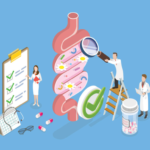



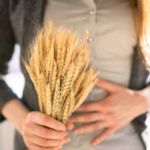




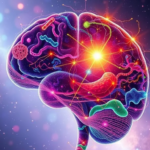





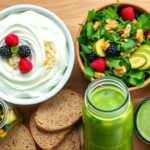














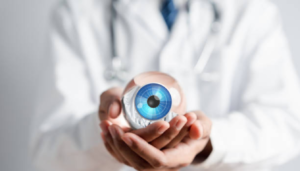
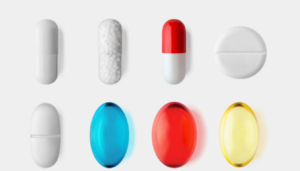



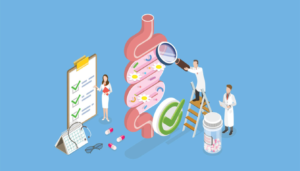

2 comments